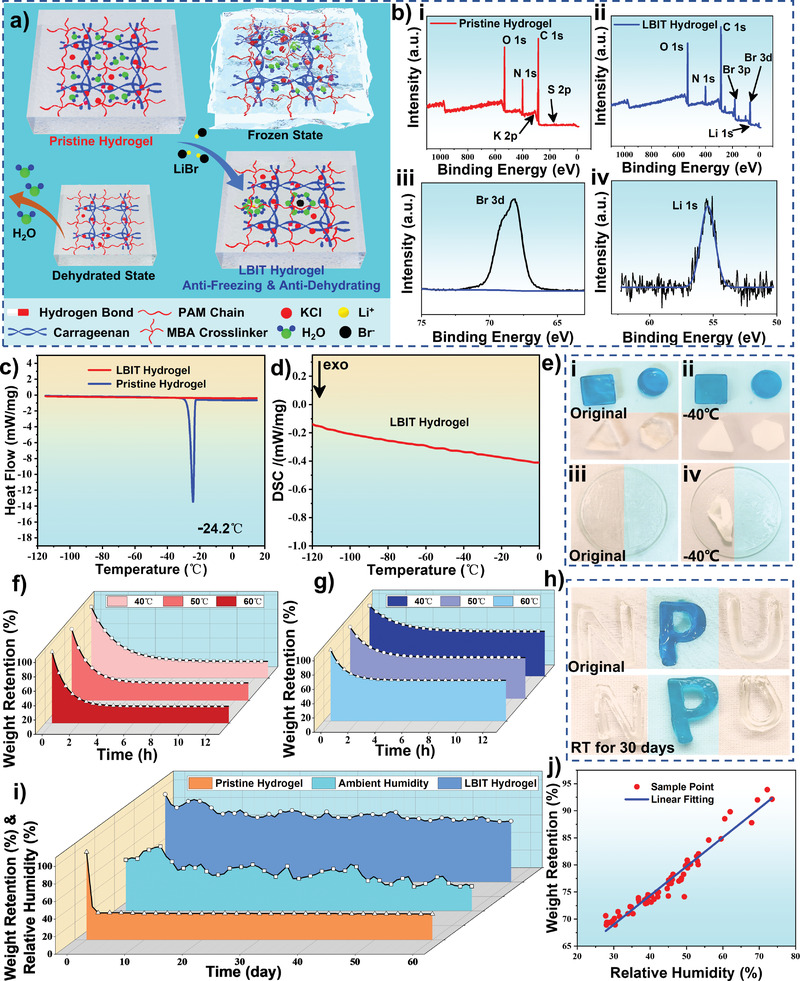Figure 2.

Anti‐dehydrating and anti‐freezing properties of the hydrogel: a) Schematic illustration shows the molecular architecture, anti‐dehydrating and anti‐freezing characteristics of pristine hydrogel and LiBr immersion treated (LBIT) hydrogel. b) XPS spectra of i) pristine hydrogel, ii) LBIT hydrogel, iii) Br 3d, and iv) Li 1s, respectively. c,d) DSC measurement of the pristine hydrogel and LBIT hydrogel. e) Anti‐freezing properties of the pristine hydrogel (in the orange region) and the LBIT hydrogel (marked in the blue region) in different shapes stored at −40 °C for 30 days. f) Comparison of weight retention of the pristine hydrogel under 40, 50, and 60 °C at 30% RH. g) Comparison of the anti‐dehydrating properties of LBIT hydrogel under 40, 50 and 60 °C at 30% RH. h) Anti‐dehydrating property of the pristine hydrogel (N‐shaped and U‐shaped in the orange region) and LBIT hydrogel (P‐shaped and marked in the blue region) after exposure at RT for 30 days. i) Weight change of pristine hydrogel and LBIT hydrogel after being kept at RT for 60 days and the ambient humidity variation during this period. j) Relationship between the weight retention and relative humidity of the LBIT hydrogel.
